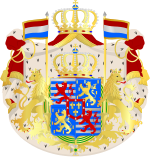
Count John VI of Nassau-Dillenburg was the second son of William the Rich and the younger brother of William the Silent. He has a special place in the history of the Netherlands because he is the male-line forefather of the House of Orange which ruled that country until 1948.
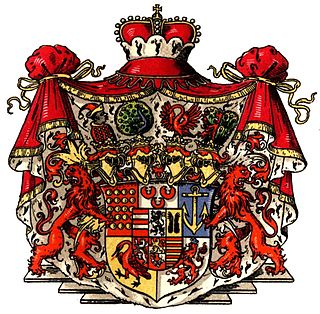
Bentheim-Tecklenburg-Rheda was a historical county of the Holy Roman Empire, located in present northwestern North Rhine-Westphalia and southwestern Lower Saxony, Germany.

The County of Bentheim was a state of the Holy Roman Empire, located in the south-west corner of today's Lower Saxony, Germany. The county's borders corresponded largely to those of the modern administrative district (Landkreis) of Grafschaft Bentheim.
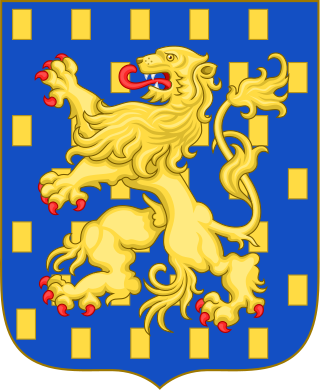
The House of Nassau is a diversified aristocratic dynasty in Europe. It is named after the lordship associated with Nassau Castle, located in present-day Nassau, Rhineland-Palatinate, Germany. With the fall of the Hohenstaufen in the first half of the 13th century royal power within Franconia evaporated and the former stem duchy fragmented into separate independent states. Nassau emerged as one of those independent states as part of the Holy Roman Empire. The lords of Nassau were originally titled "Count of Nassau", subject only to the Emperor, and then elevated to the princely class as "Princely Counts". Early on they divided into two main branches: the elder (Walramian) branch, that gave rise to the German king Adolf, and the younger (Ottonian) branch, that gave rise to the Princes of Orange and the monarchs of the Netherlands.

Lady Anastasia Mikhailovna Wernher, also known as Lady Zia Wernher, was a German-born Russian-British aristocrat and thoroughbred racehorse owner.

Nadejda Mikhailovna Mountbatten, Marchioness of Milford Haven, was a member of the Russian imperial family who married a German prince but became a British subject and aristocrat. She was a close relative of the British royal family.
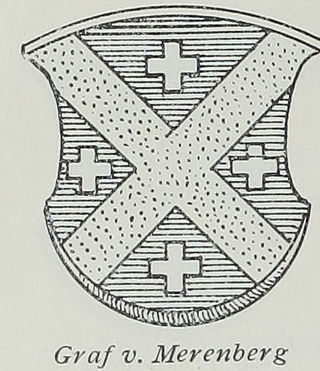
Count of Merenberg is a hereditary title of nobility that was bestowed in 1868 by the reigning Prince of Waldeck and Pyrmont, George Victor, upon the morganatic wife and male-line descendants of Prince Nikolaus Wilhelm of Nassau (1832–1905), who married Natalia Alexandrovna Pushkina (1836–1913), former wife of Russian general Mikhail Leontievich von Dubelt.
Since 2011, the crown of Luxembourg descends according to absolute primogeniture among Grand Duke Henri's descendants and according to agnatic primogeniture among other dynasts.
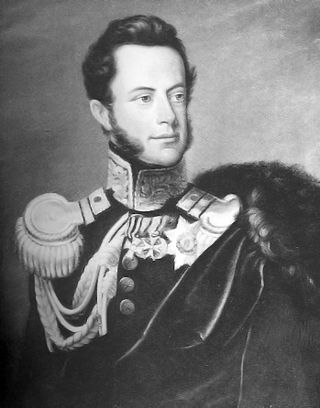
Wilhelm was joint sovereign Duke of Nassau, along with his father's cousin Frederick Augustus, reigning from 1816 until 1839. He was also sovereign Prince of Nassau-Weilburg from 1816 until its incorporation into the duchy of Nassau.

Louis I of Anhalt-Köthen, was a German prince of the House of Ascania and ruler of the unified principality of Anhalt. From 1603, he was ruler of the principality of Anhalt-Köthen. He was also a founder of the first German Society.

Prince Nikolaus Wilhelm of Nassau, was the only son of William, Duke of Nassau by his second wife Princess Pauline of Württemberg.
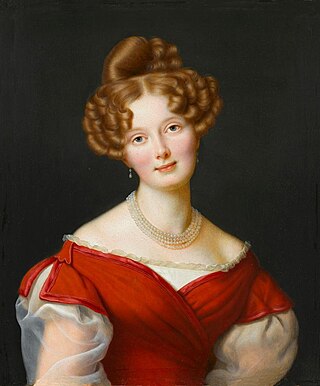
Princess Pauline Friederike Marie of Württemberg, full German name: Pauline Friederike Marie, Prinzessin von Württemberg was a member of the House of Württemberg and a Princess of Württemberg by birth. Through her marriage to William, Duke of Nassau, Pauline was also a Duchess consort of Nassau. Pauline is an ancestress of the present Belgian, Danish, Dutch, Luxembourgish, Norwegian, and Swedish Royal families. She was a maternal first cousin of Princess Alexandra of Saxe-Altenburg, as well as her paternal second cousin. Via that link, those six people, are ancestors of almost every single royal family in Europe.

Countess Sophie Nikolaievna of Merenberg, Countess de Torby, was the elder daughter of Prince Nikolaus Wilhelm of Nassau and his morganatic wife, Natalia Alexandrovna Pushkina.

Julius, Count of Lippe-Biesterfeld was Count of Lippe-Biesterfeld from 1840 to 1884 and father of Ernest II, regent of the Principality of Lippe.

Arnold III of Bentheim-Tecklenburg-Steinfurt-Limburg was a German nobleman. He was Count of Bentheim, Tecklenburg and Steinfurt, and jure uxoris Count of Limburg. He ruled as Arnold IV in Bentheim and Tecklenburg, and as Arnold II in Steinfurt. In Limburg, he was the first Count named Arnold and hence just the name distinctive.
Magdalena of Neuenahr-Alpen was a German noblewoman. She was the heiress of the House of Neuenahr-Alpen; she inherited the County of Limburg. By marriage, she was Countess of Tecklenburg.

Enno Emil von Rintelen was a German general who served in the First and Second World Wars. During the latter, he was the German military attaché in Italy.

Princess Olga Alexandrovna Yurievskaya was the natural daughter of Alexander II of Russia by his mistress, Princess Catherine Dolgorukova. In 1880, she was legitimated by her parents' morganatic marriage.

Ferdinand Maximilian III of Ysenburg-Wächtersbach was the head of the Wächtersbach branch of the House of Ysenburg and the first Prince of Isenburg-Budingen-Wächtersbach.

